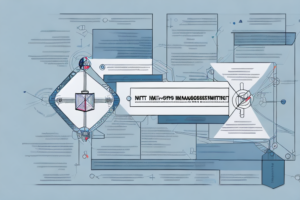What is threat assessment in RMF?

A computer system with a security shield and a magnifying glass hovering over it
In today’s digital age, information technology systems are critically important for the functioning of organizations. However, these systems are also vulnerable to different types of threats, including cyber-attacks and physical damage. Therefore, it is critical to have a robust information security management system to ensure the security and integrity of the IT environment. In this article, we will explore threat assessment in the context of the Risk Management Framework (RMF) and discuss its importance, framework, process, and challenges.
The importance of threat assessment in RMF
RMF is a structured approach to information security management that is used by various governmental agencies and organizations. The main objective of RMF is to ensure the confidentiality, integrity, and availability of sensitive information and IT systems. Threat assessment is a critical component of RMF that helps identify potential threats and risks to the IT environment.
The primary goal of threat assessment is to provide an understanding of the threats and vulnerabilities that can impact the confidentiality, integrity, and availability of the IT system. By conducting a robust threat assessment, organizations can determine the potential damage that can be caused by a threat and develop appropriate risk management strategies to mitigate and reduce the risk to an acceptable level.
Threat assessment involves identifying potential threats and vulnerabilities to the IT system, analyzing the likelihood and impact of each threat, and prioritizing them based on their level of risk. This process helps organizations to allocate resources effectively and efficiently to address the most critical threats first. Additionally, threat assessment is an ongoing process that should be regularly reviewed and updated to ensure that the organization is prepared to respond to new and emerging threats.
Understanding the RMF framework for threat assessment
The RMF framework for threat assessment involves several key steps. First, organizations must identify and understand the IT system’s assets and their associated value. Next, organizations must identify and categorize threats based on different characteristics, such as the likelihood of occurrence, impact, and scope.
Once the threats have been identified and categorized, the next step is to assess the potential vulnerabilities that exist in the IT system. Organizations can use different vulnerability assessment tools and techniques to identify potential weaknesses and vulnerabilities in the system’s architecture, design, and configuration.
After identifying potential vulnerabilities, organizations must identify the potential impacts of a particular threat on the IT system’s assets. Organizations can use different risk assessment techniques, such as qualitative or quantitative risk assessment, to identify the potential impacts.
Finally, after identifying and evaluating the different threats, vulnerabilities, and risks, organizations must develop and implement appropriate risk management strategies to reduce the risk to an acceptable level.
One important aspect of the RMF framework is the ongoing monitoring and assessment of the IT system’s security posture. This involves regularly reviewing and updating the risk management strategies and controls to ensure they remain effective against new and emerging threats. It also involves monitoring the IT system for any signs of potential security breaches or incidents, and taking appropriate action to mitigate any risks or threats.
Another key consideration in the RMF framework is the importance of stakeholder engagement and communication. This involves engaging with all relevant stakeholders, including IT staff, business leaders, and external partners, to ensure everyone is aware of the potential risks and threats to the IT system and understands their role in managing and mitigating these risks. Effective communication and collaboration are essential for ensuring the success of the RMF framework and maintaining a strong security posture for the IT system.
The role of risk management in threat assessment
Risk management is a crucial component of the threat assessment process in RMF. The primary objective of risk management is to identify, assess, prioritize, and mitigate potential risks and threats to the IT system. Organizations can use different risk management techniques, such as risk transfer, risk avoidance, risk acceptance, or risk mitigation, to manage and control potential risks and threats.
Effective risk management requires a comprehensive understanding of the IT system and the potential risks and threats that may arise. This includes identifying vulnerabilities, assessing the likelihood and impact of potential threats, and implementing appropriate controls to mitigate those risks. Risk management is an ongoing process that requires continuous monitoring and evaluation to ensure that the IT system remains secure and resilient against evolving threats.
Common threats to information systems in RMF
There are several types of threats that can impact information systems in the context of RMF. Some common threats include:
- Malware and viruses
- Social engineering
- Physical damage to IT systems
- Unauthorized access or theft of sensitive data
- Denial-of-service attacks
Organizations must be aware of these and other potential threats to the IT system and develop appropriate strategies to mitigate them.
Steps to conduct a successful threat assessment in RMF
Conducting a successful threat assessment in RMF involves several critical steps, including:
- Identifying IT system assets and their associated value
- Identifying and categorizing potential threats
- Assessing potential vulnerabilities in the IT system
- Identifying the potential impacts of a particular threat
- Developing and implementing appropriate risk management strategies
Organizations should use different techniques and tools to conduct a successful threat assessment, such as vulnerability scanning tools, penetration testing, and risk management frameworks.
Key components of an effective RMF-based threat assessment program
The key components of an effective RMF-based threat assessment program include:
- Identification of IT system assets and their associated value
- Threat identification and categorization
- Identification of vulnerabilities in the IT system
- Risk assessment and prioritization
- Development and implementation of risk management strategies
Other key components of an effective RMF-based threat assessment program include regular vulnerability assessments, proactive monitoring of the IT environment, and continuous evaluation and improvement of the risk management strategies.
Identifying and prioritizing threats in RMF
Organizations must identify and prioritize threats in the IT environment based on various criteria such as the potential impact of a threat on the IT system, the likelihood of occurrence, and the scope of the threat. Organizations can use different techniques and tools such as threat modeling, attack tree analysis, or risk matrices to identify and prioritize threats.
Analyzing and evaluating risks associated with identified threats in RMF
Organizations must analyze and evaluate the risks associated with identified threats in the context of RMF. This involves assessing the potential impacts of a threat on the IT system’s assets, identifying and evaluating potential vulnerabilities, and identifying risk management strategies to reduce and mitigate the risks.
Strategies for mitigating and managing risks in RMF
Organizations can use different strategies to mitigate and manage potential risks in the context of RMF. Some common strategies include:
- Implementing security controls and countermeasures to reduce and mitigate risks
- Transferring risk to a third-party such as an insurance company
- Accepting the risk and developing contingency plans to minimize the impact of a potential incident
- Avoiding the risk by not implementing the activity that poses the risk
Organizations should develop appropriate risk management strategies based on their needs, objectives, and risk appetite.
Best practices for implementing a threat assessment program within the framework of RMF
Implementing a threat assessment program within the framework of RMF involves several best practices, such as:
- Developing a standard methodology for threat assessment
- Regularly evaluating and improving the threat assessment process
- Proactively monitoring the IT environment for potential threats
- Ensuring that employees and stakeholders are aware of the organization’s threat assessment program and their roles and responsibilities
- Developing and implementing appropriate risk management strategies
By following these and other best practices, organizations can develop a robust and effective threat assessment program within the framework of RMF.
Challenges and limitations of conducting threat assessments in RMF
Conducting threat assessments in the context of RMF can be challenging due to several factors, such as:
- Complexity of IT systems
- Dynamic IT environment and changing threat landscape
- Limited resources and budget constraints
Organizations must be aware of these challenges and limitations and develop appropriate strategies to overcome them.
The future of threat assessment within the context of RMF
The threat landscape is continuously evolving, and new technologies and threats are emerging every day. Therefore, it is critical to continuously evaluate and improve threat assessment programs within the framework of RMF. The future of threat assessment within the context of RMF involves the use of advanced technologies such as artificial intelligence, machine learning, and big data analytics to identify and mitigate potential threats more effectively and efficiently.
Conclusion: Importance of threat assessment for ensuring robust security measures in information systems under the umbrella of RMF
Threat assessment is a crucial component of the RMF framework for managing information security risks. By conducting robust threat assessments, organizations can identify potential threats and vulnerabilities, evaluate the risks associated with them, and develop appropriate risk management strategies to mitigate and reduce those risks. Through this article, we have explored the importance, framework, process, challenges, and future of threat assessment in the context of RMF. By implementing a robust threat assessment program within the framework of RMF, organizations can ensure the confidentiality, integrity, and availability of their IT environment.



